With a focus on the first invasion
Bahaa Abdellatif
Throughout humankind history, there has been no greater force than the force of war. With every war no matter how big or small our history changes, and with it our future changes too. Understanding wars can help us understand why our world looks like it is now. Like for example, the region of East Asia has a rich history of tension and conflicts that dates back to hundreds and hundreds of years ago. To understand the tensions in East Asia, and in particular between Korea and Japan, we must look not only at the Colonial occupation but go back even further, to the Imjin war, Hideyoshi’s invasion of the Korean peninsula. The Imjin war involved the three superpowers of East Asia: Japan, China, and Korea. The war had immensely important consequences on all three, and changed the landscape of history in that region.
The Imjin war mainly refers to Japan’s two attempts at an invasion of the Korean Peninsula in the late 16th century under the leadership of Toyotomi Hideyoshi (1537-1598). The first attempt came in 1592, followed by a second attempt in 1597. Before the start of the Imjin war, Japan had been struggling for centuries. Throughout the 15th century, there were numerous conflicts domestically. At that time the biggest threat to the Japanese was the Japanese themselves. Many historians refer to that time as the Sengoku period (Warring States), a period characterized by continuous civil wars and political unrest in Japan that lasted from 1467 and did not officially end until 1615. However, during the late Sengoku period, specifically during the 1570s a Japanese daimyo (lords of feudal Japan) by the name of Oda Nobunaga laid the foundation for the unification efforts. [1] After Nobunaga, Hideyoshi –whom many regard as the second Great Unifier of Japan– took on the lead of the unification efforts, and he was eventually successful in bringing peace to the country for a brief period of time. Now that Hideyoshi had managed to unite the Japanese states, he wanted to strengthen his rule of Japan and he thought that the best way to do that was by invading China and then eventually India.[2] Japan at that time was usually governed by those with royal blood, Hideyoshi however was born a commoner and as a result Hideyoshi believed that invading China would give him the necessary prestige and respect that will enable him to remain in his position of power.[3] However, to go on with his attempt of invading China, he needed to get military access through Korea, which King Seonjo of the Joseon Dynasty (the Joseon Dynasty lasted from July 1392 until October 1897) refused to give him. Despite a long and complex history of relations with China, including armed conflict, Ming and Joseon at that time had a friendly relationship between them. The Ming dynasty was the ruling dynasty of China from 1368 to 1644. Both dynasties rose from Mongol rule and they shared very similar Confucian views that brought the two closer to one another. Therefore it made a lot of sense that King Seonjo refused to give Hideyoshi military access to China.
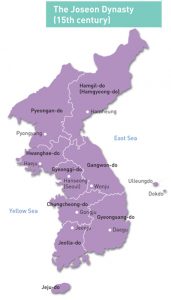

As a result of King Seonjo refusing to give Hideyoshi access, Hideyoshi decided to directly invade Korea. Hideyoshi believed that Korea would be an easy foe for Japan and that his troops could destroy it quickly before moving on to their bigger target: Ming China.[4] Some regard the Imjin war as the continent’s first major world war. For the first time in Asia, there were three powerful sides equipped with modern and advanced technology going at one another.[5] The way the three nations prepared for the war was very different. China and Korea did not even know that a war was coming. In 1591, after there had been rumors of Hideyoshi’s malevolent intentions, King Seonjo decided to send some of his people to Japan to learn more about Hideyoshi’s intentions and plans. However, the people King Seonjo sent had conflicting reports and eventually Seonjo just decided to be an optimist and he assumed that Hideyoshi would not dare to attack. However, he could not have been more wrong. Hideyoshi was gathering a very powerful army composed mainly of the highly trained and skilled samurai. In addition, Hideyoshi decided to revamp Japan’s navy and as a result he was successful in building a huge naval base.[6]

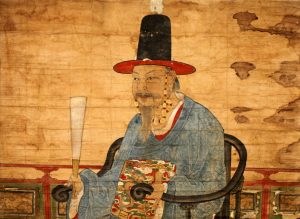
Hideyoshi made his first official move during the spring of 1592. A powerful army of 150,000 Japanese troops landed at different locations on the coast of Southeast Korea.[7] One of the first locations the Japanese attacked was Busan. The unprepared Korean soldiers at Busan were annihilated by the organized Japanese. However, some Korean soldiers managed to survive and were able to notify King Seonjo’s court in Seoul (then known as Hanseong) about the Japanese hostile invasion. Feeling confident after their win, the Japanese decided to head to Hanseong. Even though the Koreans sent a large number of troops to intercept the Japanese, the Japanese were still able to completely annihilate the Koreans for the second time. King Seonjo had to escape to northern Uiju in fear of the Japanese. At that point it looked like Hideyoshi might be right and that taking over Korea would be a relatively easy task for the superior Japanese army.[8]
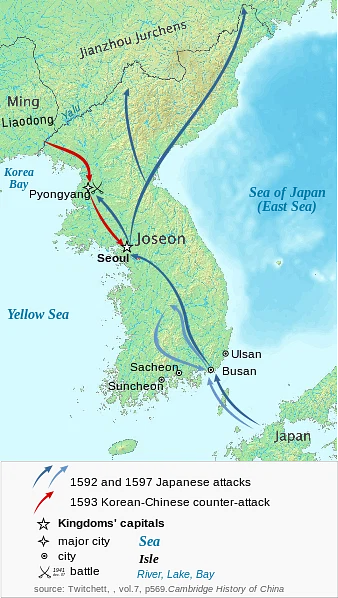
However, Admiral Yi-Sun-Shin proved that this wouldn’t be the case. Yi-Sun Shin took control of the Korean navy and completely upgraded it. His main contribution was the development of the “turtle ship”. The turtle ship was the first time the world had ever seen an iron-clad warship.[9] The ships had cannons facing in every direction and were able to efficiently hide their movements. Admiral Yi-Sun-Shin and his turtle ships helped the Korean navy achieve multiple victories over the Japanese. And for once since the beginning of the war, the Koreans finally had an advantage over their Japanese counterparts. Those Korean victories revived the Korean people’s spirits and they decided to take matters into their own hands by fighting off the Japanese using guerrilla warfare. The Koreans were making small wins here and there. Eventually, Ming China started to get worried and realized that the Japanese invasion of Korea might have dire consequences on China too and as a result, in February 1953 Ming China sent numerous troops to Korea to halt the Japanese invasion. The Chinese efforts were successful, and the Japanese eventually retreated. Japan and China kept on having peace talks for four long years. In the end, the negotiations failed and Hideyoshi was not happy with the way Ming China responded to his demands.
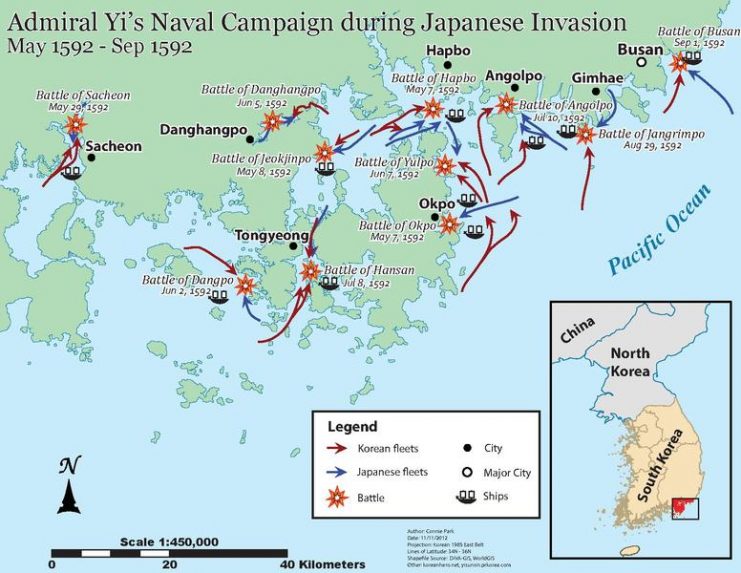
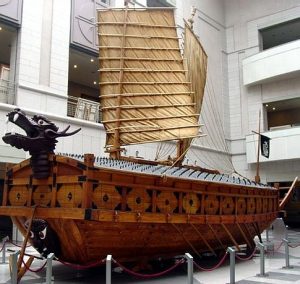
In August 1597, Hideyoshi wanted to attempt a second invasion of Korea. He sent 100,000 troops to Busan. However, this time the Japanese did not have the element of surprise anymore. The Koreans were very well prepared this time and managed to hold the Japanese off.[10] The war went on for over a year, with both sides picking a few victories here and there. However, the Koreans were very successful in halting almost all Japanese advances. Hideyoshi eventually passed away on September 18, 1598. Once the Japanese soldiers have received the news of the death of their leader, their wills were crushed and eventually they retreated.[11]
The war had dire consequences on all involved, especially on Korea. The Imjin War was one of the “most traumatic events in Korea’s long history, certainly on a par with the Korean War of the 1950s in the scale of the devastation wreaked upon Korea’s landscape and arguably even more important in terms of its lasting effects on the national psyche.”[12] After the war the Koreans felt more connected to their homeland and really despised the Japanese. Many Koreans viewed Hideyoshi as “repulsive” and “insect-like”. The Koreans felt that the Japanese deviously took advantage of the fact that Korea has been at peace for so long and were not prepared for war. Throughout the war, the Japanese committed atrocious acts against the Koreans. For example, they burned a lot of their temples like the Temple of Grain and Temple of Royal Ancestors. The Japanese even forced themselves into the Korean government. The Japanese did not only want to win the war but they wanted to make the Koreans suffer. They burned family shrines, raped women, and seized children. They would kill anybody who attempted to escape and those who did not escape were forcibly enslaved. Kang Hang, a Korean captive of the Imjin war referred to the acts the Japanese committed in Korea as ” a disaster to common humanity.”[13]
Bibliography
Haboush, JaHyun Kim and Kenneth Robinson. A Korean War Captive in Japan, 1597-1600: The Writings of Kang Hang. New York: Columbia University Press, 2013.
Swope, Kenneth. “As Close as Lips and Teeth Debating the Ming Intervention in Korea”. In Debating War in Chinese History, ed. Peter Lorge, History of Warfare, Volume 83, 163-190 Leiden: Brill, 2013.
Swope, Kenneth. “Crouching Tigers, Secret Weapons:Military Technology Employed during the Sino-Japanese-Korean War, 1592-1598.” The Journal of Military History 69, no 1, 2005: 11–41.
Swope, Kenneth 2008. “War And Remembrance: Yang Hao and the Siege of Ulsan of 1598”. The Journal of Asian History 42, no 2, (2008): 165–95.
Szczepanski, Kallie. “The Imjin War, 1592-98”, ThoughtCo, March 06, 2017, https://www.thoughtco.com/the-imjin-war-1592-98-4016849
Varley, H. Paul. Japanese Culture. Honolulu: University of Hawaiʻi Press, 2000.
- Paul Varley, Japanese Culture (Honolulu, University of Hawaiʻi Press, 2000), 141 ↵
- Kenneth Swope, "War and Remembrance: Yang Hao and the Siege of Ulsan of 1598," Journal of Asian History 42, no. 2 (2008): 165 ↵
- Paul Varley, Japanese Culture (Honolulu, University of Hawaiʻi Press, 2000), 142 ↵
- Kallie Szczepanski, "The Imjin War,1592-98," Thoughtco, March 6, 2017. https://www.thoughtco.com/the-imjin-war-1592-98-4016849 ↵
- Kenneth Swope, "Crouching Tigers, Secret Weapons: Military Technology Employed During the Sino-Japanese-Korean War, 1592-1598," Journal of Military History 69, no. 1 (2005): 11. ↵
- Szczepanski, "The Imjin War,1592-98". ↵
- Swope, "War and Remembrance:Yang Hao and the Siege of Ulsan of 1598," 167 ↵
- Szczepanski, "The Imjin War, 1592-98". ↵
- Szczepanski, "The Imjin War,1592-98" ↵
- Szczepanski, "The Imjin War, 1592-98". ↵
- Szczepanski, "The Imjin War, 1592-98". ↵
- Kenneth Swope, "As Close as Lips and Teeth: Debating the Ming Intervention in Korea," in Debating War in Chinese History, ed. Peter Lorge, History of Warfare, Volume 83 (Leiden: Brill, 2013), 163. ↵
- JaHyun Kim Haboush and Kenneth Robinson, A Korean War Captive in Japan, 1597-1600 : The Writings of Kang Hang, (New York: Columbia University Press, 2013), 23-28. ↵
